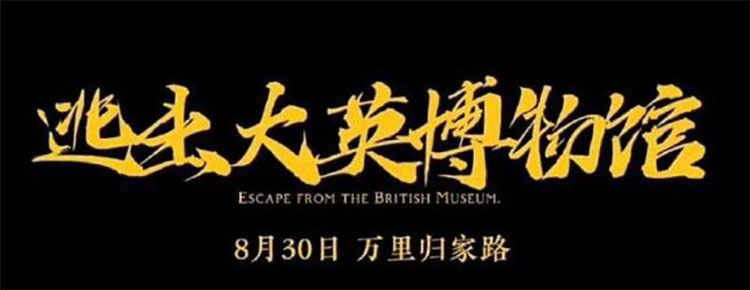HOT PRODUCTS
Details
 Home
> NEWS
> Company news > Details
Home
> NEWS
> Company news > Details
Escape From The British Museum
Escape From The British Museum
Recently, Tiktok has just launched an episode in China, and the self-made short play Escape from the British Museum has become a hit on the whole network. Many viewers expressed that after watching it, their mood couldn't calm down for a long time. "No Chinese person can come out of the British Museum with a smile
Without special effects or complex storylines, it evokes strong empathy due to being grounded in reality. The short film adopts a personification approach and tells the story of Chinese cultural relics fleeing to their hometowns in the British Museum. The Chinese entangled branch patterned thin tire jade pot accidentally met a Chinese journalist working overseas. When she heard the familiar Chinese language, she was extremely excited. "Family! I have been wandering outside for a long time, and I have lost my way." "Do you want to take me back to China
Although the total duration is less than 3 minutes, many small details in the drama have sparked online discussions. Why is Xiaoyuhu's face dirty and surprised that a cabinet (room) can accommodate two people? Because Britain has never treated treasures well, many cultural relics are casually crowded together during exhibitions, some even without protective covers, allowing tourists to touch them. Why does Xiaoyuhu solemnly emphasize to the male protagonist that she is "a lamp"? Because in distant foreign countries, few people understand the delicate and brilliant background of Chinese cultural relics, let alone remember those "engraved names" in their hearts
From bronze ware from the Shang and Zhou dynasties, to porcelain from the Tang and Song dynasties, and gold and jade products from the Ming and Qing dynasties, there are about 23000 Chinese cultural relics in the British Museum, known as the "Stolen Cathedral", of which about 2000 are on long-term display. Due to chaotic management, these artistic treasures cannot play the role of inheriting history and culture, but instead face the fate of being stolen, damaged, and hung on e-commerce platforms.
Looking around the world, there are over 1.67 million Chinese cultural relics in at least 218 museums in 47 countries. According to statistics, since the Opium War in 1840 alone, over 10 million Chinese cultural relics have been scattered out of the country due to reasons such as war and unfair trade. The treasures that have left their homes are a record of heartbreaking stories amidst the turmoil, and they constantly remind the Chinese people of the painful lesson of "falling behind means being beaten".
If cultural relics can speak, and if longing has a voice, the phrase 'go home' must be a common call. Since 1949, China has pursued lost cultural relics through various means such as law enforcement cooperation, judicial litigation, negotiation and donation, rescue and collection, and has successfully facilitated the return of over 300 batches and over 150000 lost Chinese cultural relics overseas. Especially in recent years, we have been committed to contributing Chinese strength and wisdom to the establishment of more fair and just international rules for the recovery and return of lost cultural relics. In 2014, the bronze vessels of Tianquan and Fanglei were returned home. In 2018, the bronze Huying of the Western Zhou Dynasty arrived in his hometown. In 2020, the horse head bronze statue, which had been lost for a full 160 years, was officially collected in the Yuanmingyuan... The text is recorded in the objects, and the essence of the tribe is attached. Yunmai is implicated, and those who thrive will see each other. The path of return showcases the process of national rejuvenation and also witnesses the determination of the Chinese people to protect cultural genes.







